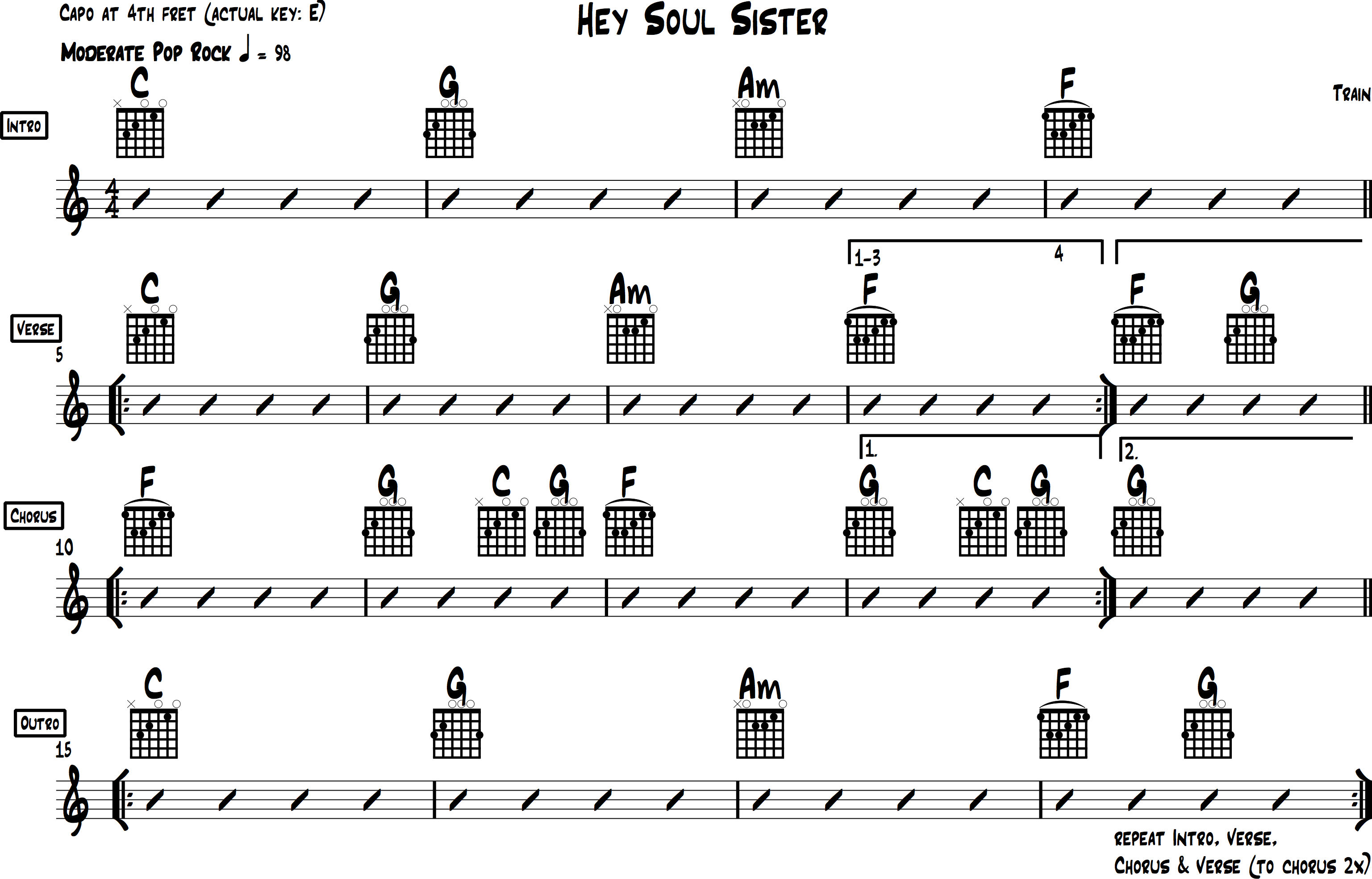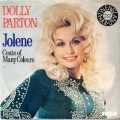 Hey, Soul Sister is a song by the American rock band Train. It was released as the lead single from the band’s fifth studio album, Save Me, San Francisco (2009). The song peaked at number three on the Billboard Hot 100 chart and is Train’s highest charting song to date. In 2010, the song had sold over 6 million digital copies in the US and was the top-selling song on the iTunes Store. Hey, Soul Sister was the second overall best-selling song in the US in 2010. Today we’ll learn an easy acoustic guitar arrangement of the Hey Soul Sister chords.
Hey, Soul Sister is a song by the American rock band Train. It was released as the lead single from the band’s fifth studio album, Save Me, San Francisco (2009). The song peaked at number three on the Billboard Hot 100 chart and is Train’s highest charting song to date. In 2010, the song had sold over 6 million digital copies in the US and was the top-selling song on the iTunes Store. Hey, Soul Sister was the second overall best-selling song in the US in 2010. Today we’ll learn an easy acoustic guitar arrangement of the Hey Soul Sister chords.
Useful links
Song Specs
Title: Hey, Soul Sister
Artist: Train
Songwriters: Patrick Monahan, Amund Bjørklund, and Espen Lind
Album: Save Me, San Francisco
Key: C (Capo at 4th fret, actual key is E)
Tempo: 98
Chord Progression: C–G–Am–F
Accompaniment Technique: Open Chords, Pulsing and Boom-Chicka Strumming
Playing Tips
Here are some helpful tips to keep in mind when learning the Hey, Soul Sister chords. I provided some useful links above and I’ll take you through the chords, accompaniment patterns, song form, and chord chart. Everything you need to get started playing this tune.
Chords
| Chords w/ Capo | C | G | Am | F |
| Actual Key | E | B | C#m | A |
| Progression | I | V | vi | IV |

Hey, Soul Sister is the key of C. However, by adding a capo to the 4th fret, we can use open-position chords that will make it easier to play. The capo at the 4th fret changes the key to C which will be more comfortable than the actual E key for guitar players. We’ll be playing the Hey Soul Sister chords in the key of E but thinking in the key of C. And, the chord positions in the key of C are easier and sound better than the key of E chords.
Many of you may be thinking, “But, isn’t E a good key for guitarist?” And, the answer would be, “Yes.” But, in this case, the key of E would give us two barre chord shapes and the open-E inversion sounds a little too heavy. One of the tricky things about this tune is that the ukulele is such a prominent part of the sound that recreating it with a guitar causes a couple of minor challenges. For you more seasoned players, I encourage you to try different inversions of E or position the capo at different fret positions. I also like the capo at the 7th fret: A–E–F#m–D.
Accompaniment Technique
Hey, Soul Sister uses an alternate (down and up) strumming technique. Amongst guitarists, this technique is referred to as the boom-chicka pattern. Here’s the breakdown:
- The “boom” is the bass (lowest note of the chord) played with a down strum
- The “chicka” is the higher part (the top 2 or 3 strings) of the chord also played with alternating strums (down followed by up)
- Down strum on “chick” and the up strum on “a”
There’s a boom-chick technique that is the basic version of the boom-chicka. And, the boom-chick only uses down strums: bass-chord, bass-chord, or, boom-chick, boom-chick.
When hitting the bass (boom), you aim for the lower part of the chord (or the bottom three strings). Then, for the chord (chick), aim for the higher three strings.
Also, you don’t need to strum too hard. Brush the strings and try to recreate that bouncy feel that is a key component of the song.
Pulsing
The pulsing technique is a left-hand technique that is used to create a more percussive feel and will help you create the bounce that makes people tap their feet, bob their heads, and shake their booties.
Fret the chord as you normally would. Then, after you strum, release the pressure of your fret hand without letting go of the chord position. The trick is to maintain contact with the strings as you pulse. Open chords are tricky to pulse because of the open strings. But, keep at it and you’ll find that it’ll become one of your go-to techniques in no time.
Hey Soul Sister Chords Chart
I’ve included a Hey Soul Sister chords chart, which is a simple road map that shows you:
- The overall arrangement of the song.
- A section by section breakdown of the song.
- Each chord and how long to play it for.
If you don’t read music, please don’t be intimidated. This is a cheat sheet that can help you get through the tune quickly and easily. I find it indispensable for learning songs and I can also hand it to a seasoned musician and they can follow along without any problems.
Song Form
- Intro: 4-bar pattern; Measure 1 (C for 4 beats), Measure 2 (G for 4 beats), Measure 3 (Am for 4 beats), and Measure 4 (F for 4 beats).
- Verse: 4-bar pattern that’s repeated; Measure 1 (C for 4 beats), Measure 2 (G for 4 beats), Measure 3 (Am for 4 beats), and Measure 4 (F for 4 beats) the first time around, the second time around (F for 2 beats and G for 2 beats).
- Chorus: 4-bar pattern that’s repeated; Measure 1 (F for 4 beats), Measure 2 (G for 2 beats, C for 1 beat and G for 1 beat), Measures 3 (same as Measures 1), and Measure 4 (same as Measure 2) the first time around, the second time around (G for 4 beats).
- Outro: 4-bar pattern that’s repeated; Measure 1 (C for 4 beats), Measure 2 (G for 4 beats), Measure 3 (Am for 4 beats), and Measure 4 (F for 2 beats and G for 2 beats).
Once you become familiar with chord charts, you’ll gonna never want to go back. It’s just easier to see where you’re going when you have a map. And, it’s especially helpful when you’re not familiar with the song or there’s a section of the song that you don’t remember. Bridges and Interludes are notorious surprises that can derail a song’s performance and, fortunately, this song doesn’t have either. But, careful, that Chorus has a funny way of sneaking up on you.

Wrap-up
Hey, Soul Sister is a crowd favorite. Begin strumming the chords to this song and there’ll be no shortage of singers that will begin shouting, “Hey, ay, hey, ay, ay, ay, ay… Hey, ay, ay, ay, ay…”
I hope that you’ve enjoyed this lesson on the Hey Soul Sister chords and that I’ve helped you add another song to your growing repertoire.
Thanks for hanging with me.







